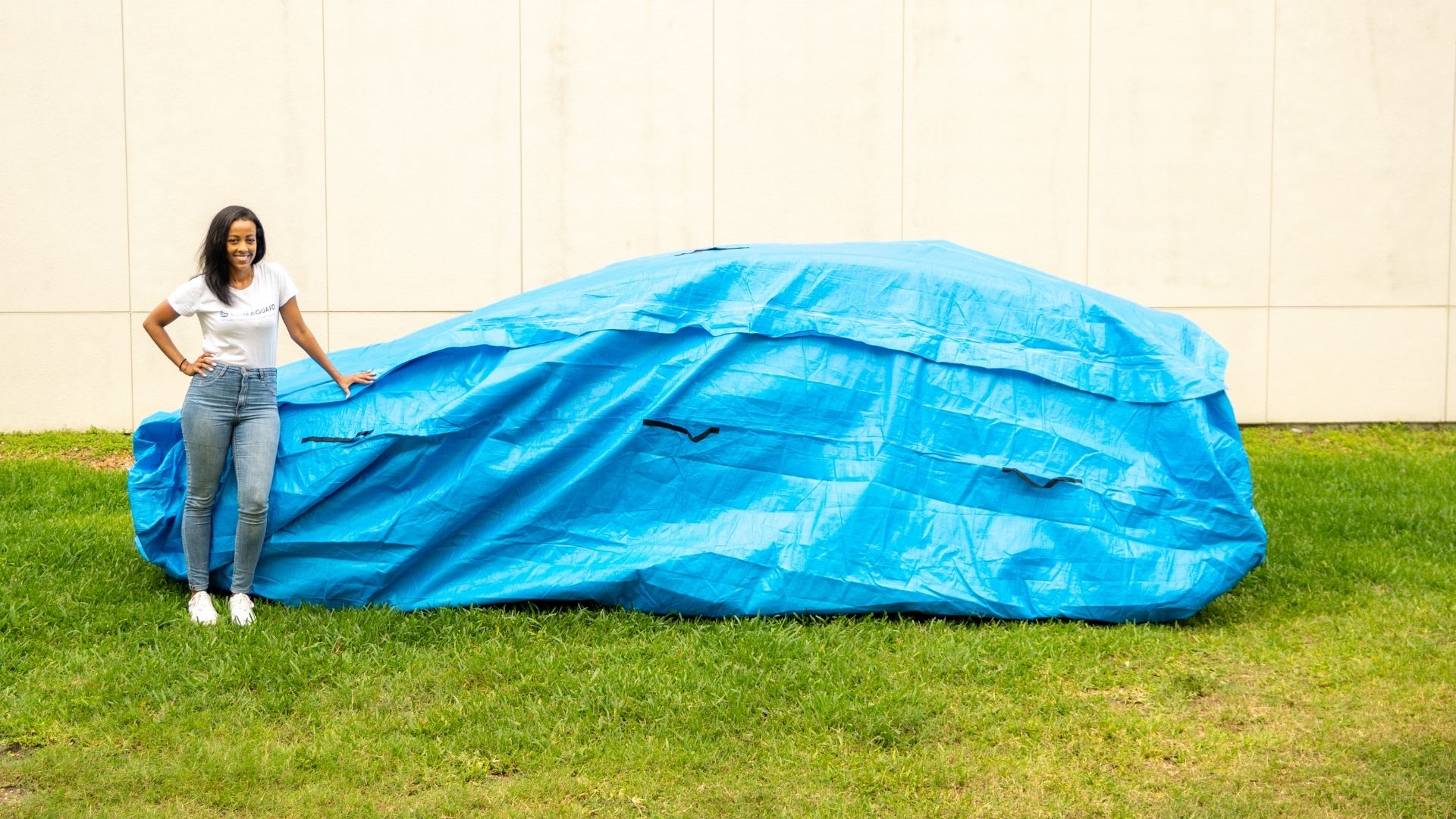

Hurricane Harvey blasted ashore in Port Aransas, Texas on August 24, 2017 as a category 4 storm. Harvey lumbered up the coast of Texas into Louisiana over the next several days, causing catastrophic flooding; 50 inches of rain pelted the Houston area alone.
As the rising waters approached Rahel Abraham’s condominium building, residents gathered what they could and stayed on the upper floors until the water receded. Thankfully, no lives were lost in her community. However, Abraham’s car and all her neighbors’ cars were totaled in the flood, making it extremely challenging for them to mobilize for the salvage and recovery process. That crisis spurred an idea for Abraham that became ClimaGuard, a temporary enclosure made of heavy-duty, waterproof materials to protect cars and other belongings in a flood.

Abraham lost her 2008 Infiniti G35 to water damage and saw how much was damaged by the flooding, including a collection of large-format artwork created by a friend of hers who is an artist and cancer patient. The paintings were her friend’s sole source of income, so this was a devastating loss. As Abraham and her neighbors waited weeks for insurance claims to process, she found herself thinking, “I have the time and the understanding of materials, and I wanted to do something.”
The Houston resident placed a claim on her car with her insurance, which informed her there was a waiting list for a rental; she was on the waiting list for a month as she negotiated her payout.
“These events took a toll on my neighbors and I, especially since there was little we could do to prevent this same outcome if another flooding event occurred,” Abraham told me on the phone. “That same year, Hurricanes Irma and Maria hit, and the affected communities lost about one million cars. At that moment, I decided if I do not create a better option for flood-prone communities, these total losses in affected areas will continue to happen.”

Abraham has a chemical engineering degree at the University of Texas at Austin and a master’s degree in environmental engineering from the University of Houston, and she put her experience to work to design, test, and manufacture her creation. It looks and sounds deceptively simple: basically, the enclosure is like a giant Ziploc bag for cars and other objects. Here’s the genius part: she designed it for the zipper line to sit above the point where the enclosure begins to float, keeping the contents inside safe and dry.
“Once it starts floating, it’s like a boat,” Abraham says. “You can move it with one hand.”
The inventor came up with a number of must-haves for her creation: first, it was important that the tool could easily be handled by a single person. Second, she knew anchoring straps were critical to prevent the car from drifting. The third factor was the quality of the material.

“Since there was large amount of coverage required, I didn’t want the material to be too heavy, but I also didn’t want to compromise the waterproof performance,” Abraham says. “Other requirements were that I wanted the longest shelf life possible since [it] would be stored in a car’s trunk or home attic and made with a recyclable plastic.”
The military-grade material was found from nine months of testing working with a Swiss testing firm and different manufacturers. Abraham and her team came up with a testing protocol and they sourced materials until they found the one with the best performance properties that is still affordable. They discovered that some materials peeled when sitting in water, aged quickly under different simulated weather conditions, or were too heavy.


The enclosure sold out its first 30 units and is priced in three sizes starting at $399, intentionally less than an average $500 car insurance deductible. By design, it weighs about 30 pounds, stores in a duffel bag, and can be set up by one person in ten minutes.
For people in flood-prone areas, this emerging idea could save them weeks of headaches and loss. Abraham, for one, never wants to go through that again.
Got a tip? Send the writer a note: kristin.shaw@thedrive.com